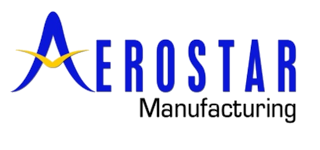Consider this look into the future of the metal forging industry.
According to EIN News:
The global Metal Forging market is forecast to reach USD 141.62 Billion by 2027, according to a new report by Reports and Data. The market is witnessing a surge an increased demand from the automotive industry due to its durability, strength, and reliability of forged components. However, alternative manufacturing processes for components, explicitly casting, will hamper the demand of the market.
Rapid urbanization has changed the lifestyle of the people and, in turn, has increased the prevalence of aerospace and automotive sectors over a broad aspect, thus, augmenting the demand for the market product. The limitations of metal forging, which include brittle metals that cannot be forged and is not apt for the complex shaping of the components, thereby gives rise to the need in the market to look for alternative options that will be hindering the growth of metal forging market.
The advent of the use of metal forging supported by the Ministry of Heavy Industries & Public Enterprises of the Indian government, as the forging market in India, is the key contributor to the overall manufacturing sector, thus creating a demand of the product in the market. Moreover, other nations such as China, Europe, and the United States are also supported by their respective government, which help them to withhold their position in the market and raise the potential to increase expenditure in the metal forging industry. The United States has initiated new anti-dumping duty and countervailing duty investigations to determine whether the forged steel fittings from countries like India and Korea are being dumped there and to find out whether producers in India are receiving unfair subsidies. There are around 45 subsidy programs alleged for India, which includes allegations that the Government of India provides exported subsidies, as well as subsidized financing, land, steel, and other raw materials. According to studies, The Asia Pacific region forecasted to grow with the highest growth rate owing to the increase in the use of metal forging…
Further key findings from the report suggest
Based on raw materials, carbon Steel is expected to grow with a CAGR of 6.7% in the forecast period, owing to its fundamental characteristics, which include efficiency, availability, and cost, thereby making it appropriate to use for a variety of applications.
The growth of the automotive sector has arisen the need for production of close net shapes with minimal maintenance over large production runs, driving the demand for the Metal Forging market. The open-die forging held a market share of over 22.0% in 2019 and is likely to grow at a rate of 7.3% in the forecast period.
The Automotive sector is the major contributor to the Metal Forging market, which was USD 28.75 billion in 2017 and is forecasted to grow at a rate of 7.1% in the period 2020-2027. The construction sector of the Asia Pacific region is estimated to grow at the fastest rate of 8.3% in the forecast period.
The Asia Pacific dominated the market for Metal Forging. The consistent focus of the region on cost-effective and innovative procedures adopted in the area is driving the market. According to studies, the Asia Pacific region holds approximately 58.81% of the Metal Forging market, followed by Europe, which contains around 20.6% market by area in the year 2019.
For the purpose of this report, Reports and Data have segmented into the global Metal Forging market on the basis of raw materials, type, application, and region:
Raw Materials Outlook (Revenue, USD Billion; 2017-2027)
Carbon Steel
Alloy Steel
Aluminum
Magnesium
Stainless Steel
Titanium
Others
Type Outlook (Revenue, USD Billion; 2017-2027)
Close-Die Forging
Open-Die Forging
Ring Rolling Forging
Upset Forging
Precision Forging
Application Outlook (Revenue, USD Billion; 2017-2027)
Automotive
Aerospace
Oil & Gas
Construction
Agriculture
Others
The research study includes an in-depth analysis of the market using advanced research methodologies such as SWOT analysis and Porter’s Five Forces analysis. The report further explores the key business players along with their in-depth profiling, product portfolio, and strategic business decisions. The report has been formulated through extensive primary and secondary research and further validated by analysts, industry experts, and market professionals. The report also sheds light on the recent mergers and acquisitions, joint ventures, collaborations, partnerships, and product launches, among others.
